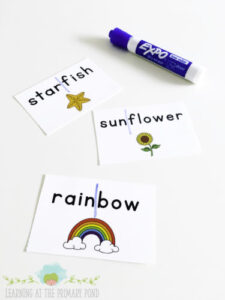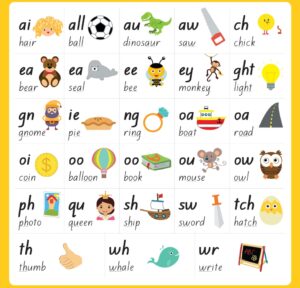Back to: English Primary 1
Welcome to class!
In today’s class, we will discuss Phonics and Sounding out Words. I am trusting that you are going to enjoy the class!
Today, we’re going to learn about some really cool strategies that will help us read words better. Are you excited? Let’s get started!
Sounding out Words in Text:

When we come across a new word, we can try to sound it out.
This means saying each sound in the word slowly and then blending them together.
Let’s try with a word: “cat.” Can you say the sounds? “C-a-t.” Now blend them: “cat.” Great job!
What about “dog.” Can you say the sound? Great.
Breaking Words into Smaller Words

Sometimes big words can be tricky. To make them easier, we can break them into smaller words we know. Like “sunset.” We know “sun” and “set,” right? Let’s say them together: “sun-set.”
Word Parts and Compound Words
Some words are made by joining two smaller words together. These are called compound words. For example, “pancake” is made from “pan” and “cake.” Can you think of more examples?
Diagraphs
A diagraph is when two letters make one sound. Like “sh” in “ship” or “ch” in “chat.” Let’s say these sounds together: “shhh,” “chhh.” Cool, right?
Long and Short Vowels

Vowels are those special letters that make our words sing! Some vowels are long (they say their name), and some are short (they make a quick sound). For example, “ape” has a long ‘a’ sound like saying “a-a-ape,” and “cat” has a short ‘a’ sound like saying “a” quickly.
Remember, these strategies are like our reading superpowers. The more we practice, the better we’ll get at reading all sorts of words. Keep up the fantastic work, and soon you’ll be reading like experts! 📚🚀
Assignments:
First, I want each of you to choose a word from a book you’re reading, a magazine, or even a story we’ve read in class. This is the word you’ll explore and learn more about.
Secondly, Write down your chosen word, and then, like we did in class, try to break it into its individual sounds. For example, if you choose “frog,” write “f-r-o-g.”
We have come to the end of today’s class.
I hope you enjoyed the class.
In our next class, we will be talking in detail about Fluency
Should you have any further questions, feel free to ask in the comment section below, and trust us to respond as soon as possible.
